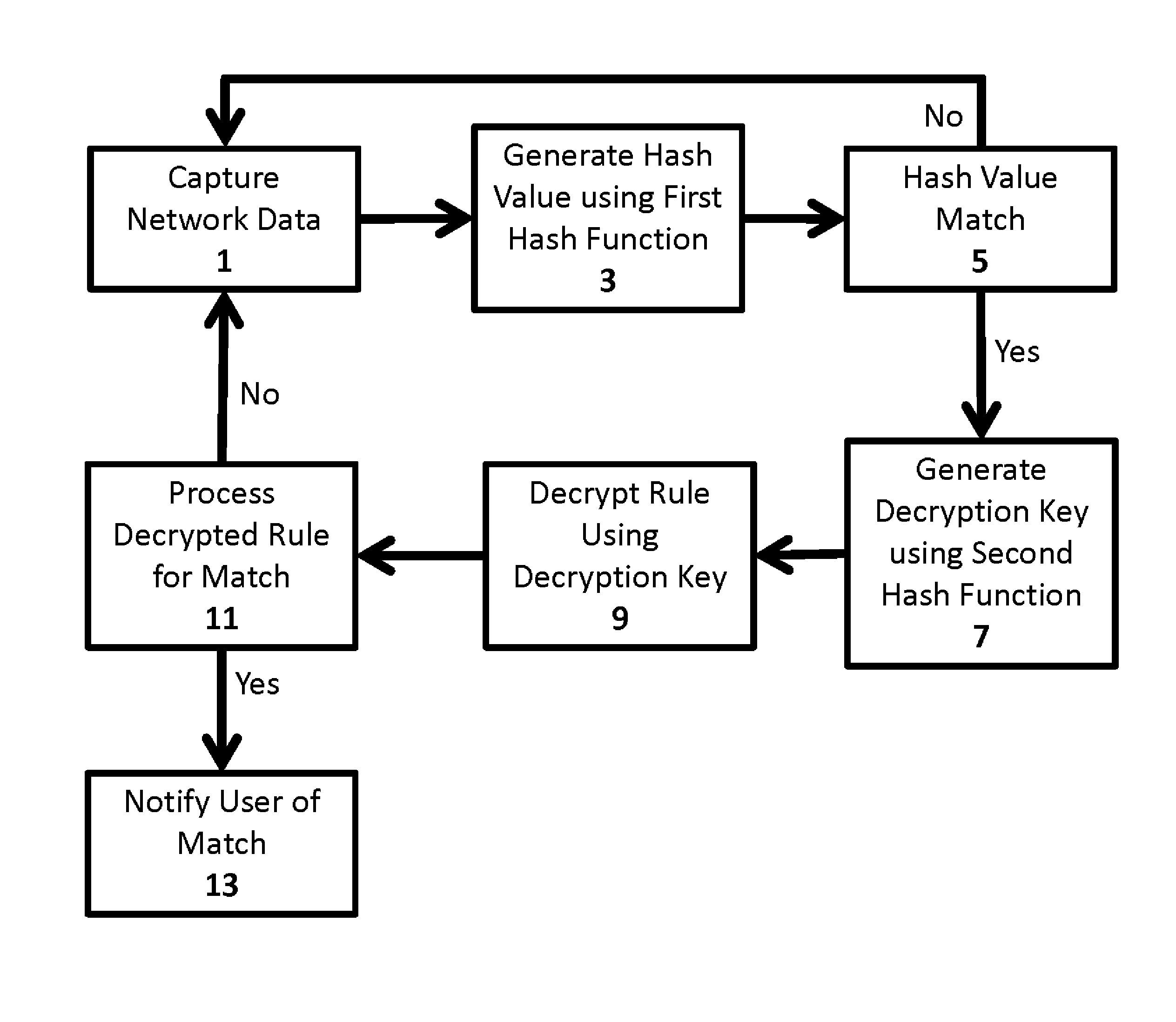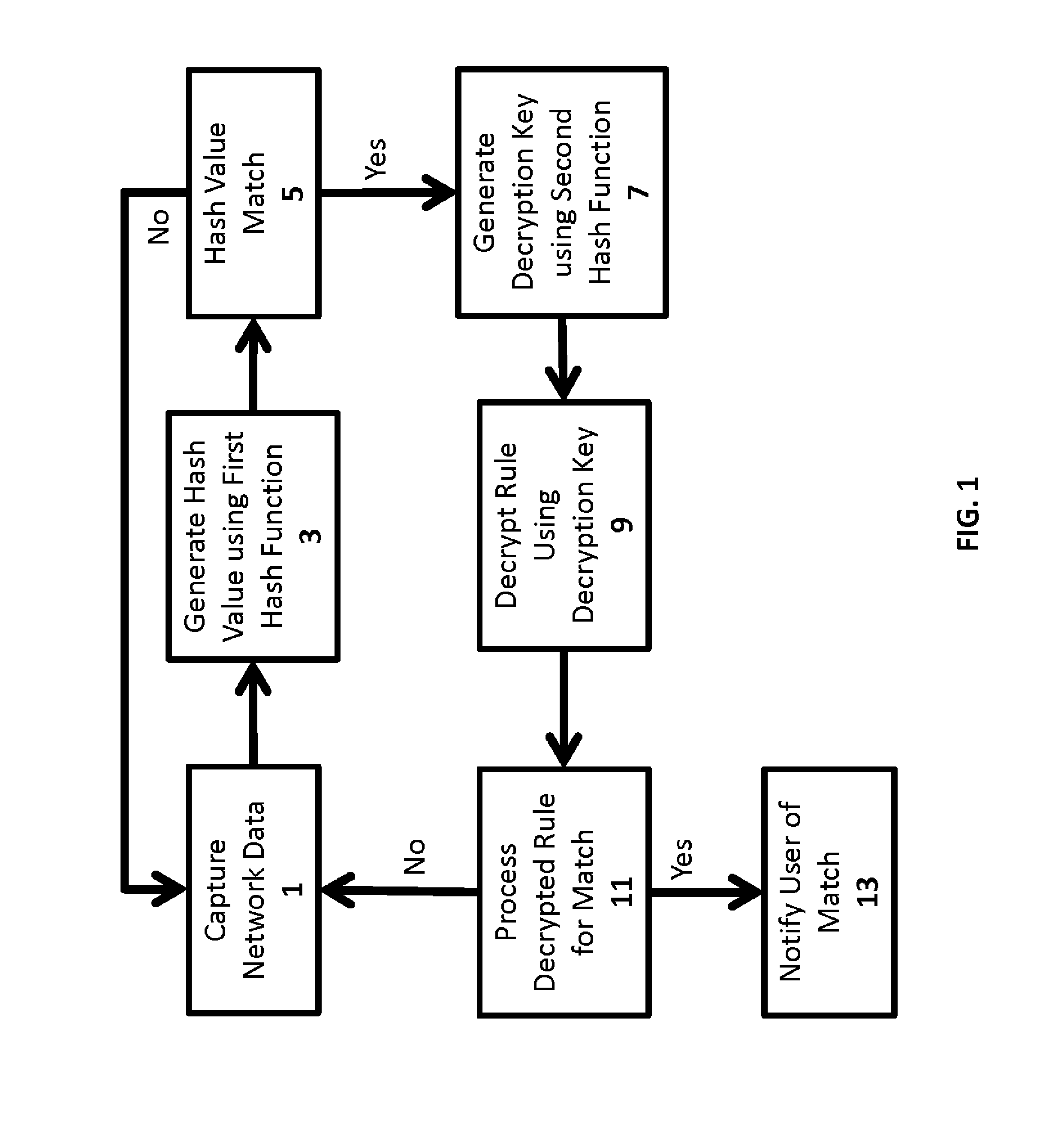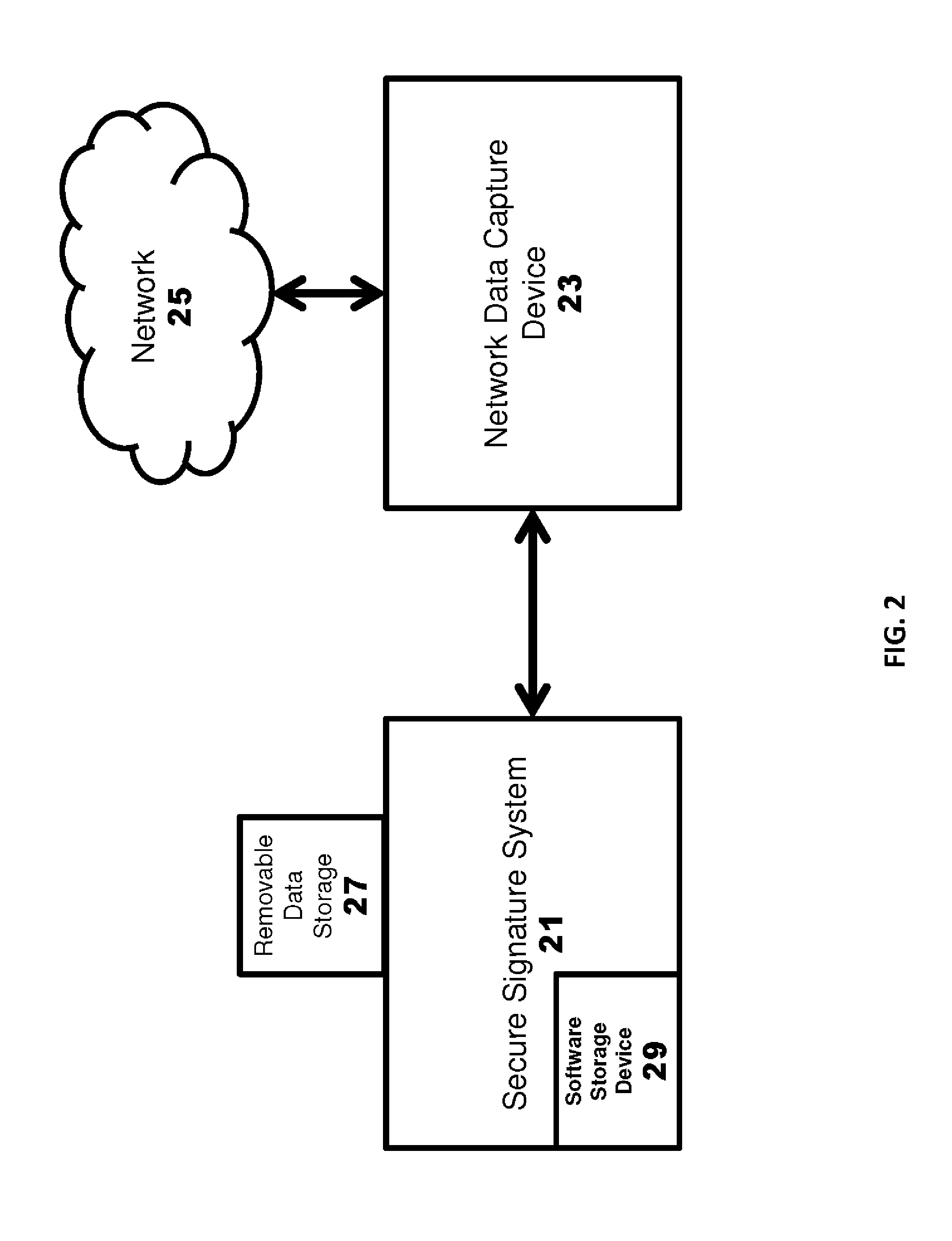Intrusion detection using secure signatures
a technology of intrusion detection and secure signatures, applied in the field of intrusion detection using secure signatures, can solve the problems of limited success of adaptive intrusion techniques that are able, exposing software vulnerabilities, and facilitating instant transfer to all users
- Summary
- Abstract
- Description
- Claims
- Application Information
AI Technical Summary
Benefits of technology
Problems solved by technology
Method used
Image
Examples
example 1
[0043]In one exemplary embodiment, one or more vulnerabilities are identified and a corresponding vulnerability signatures and rule are generated. Each vulnerability signature is passed through a first hash function preferably utilizing a bloom function generated a search hash value, in a secure signature table. Each vulnerability signature is also passed through a second hash function, preferably a SHA function, generating a decryption key. Each rule corresponding to each signature is then encrypted, preferably using an AES encryption, using the corresponding decryption key. Each resulting encrypted rule is then saved in a second row with the corresponding encrypted signature in the secure signature table.
[0044]Preferably, the secure signature table is deployed on a removable storage device, as described above. At the user site, the provided removable storage device is connected to the secure signature system. Preferably the secure signature system is connected to a network capture...
example 2
[0046]In one embodiment, a secure signature device is a small computer in a secured tamper responding enclosure which has 2 USB interfaces and a USB transport cord. The end user supplies a network tap which will feed raw network data to the secure signature device via the USB transport cord. The USB transport cord is also used to send messages such as systems status and secure signature alerts back to the network tap. Preferably, a reference network tap running on commodity PC hardware running some variation of Unix (Linux, Freebsd, OSX, Solaris, etc), is used by end users as a drop in network tap for use with the secure signature device.
[0047]Preferably, the system is designed to isolate the secure signature device as completely as possible from attack. The hardware is preferably designed to resist and respond to any attempt to open the device. The software stack interfacing with the USB transport cord is preferably a message based protocol which only responds to a small set of spe...
example secure
Signature Table
[0074]In one embodiment, the secure signature table is a SNORT configuration file adapted for handling the unique hash value matching and encrypted rules described herein. In one embodiment, a single rule has the form:[0075]alert tcp $EXTERNAL_NET $HTTP_PORTS→$HOME_NET any (msg:“Exploit Signature Sample”; flow:to_clientestablished;[0076]hash_function:“$HASH_FUNCTION1”; hash_table:“$HASH_TABLE1”; encrypted_rule:“$ENCRYPTED_RULE1”)
[0077]As shown, the rule tells SNORT to look for packets coming from an external network from a HTTP port, going into the home network, with an established TCP session. The rule is looking for data going to the client, not to the HTTP server. Any particular port, flow, source or destinations may be used. The other parameters are as follows:[0078]hash_function:“$HASH_FUNCTION1” describes the first hash function used in generating a search hash value from said captured network data. For performance concerns, this hash value is only calculated on...
PUM
 Login to view more
Login to view more Abstract
Description
Claims
Application Information
 Login to view more
Login to view more - R&D Engineer
- R&D Manager
- IP Professional
- Industry Leading Data Capabilities
- Powerful AI technology
- Patent DNA Extraction
Browse by: Latest US Patents, China's latest patents, Technical Efficacy Thesaurus, Application Domain, Technology Topic.
© 2024 PatSnap. All rights reserved.Legal|Privacy policy|Modern Slavery Act Transparency Statement|Sitemap



